The ancient Egyptians ate a wide variety of food. Their diet was low in fat, and rich in fiber and carbohydrates. The Nile gave Egypt fertile land which ensured an abundant and variable food supply. This resulted in a highly diverse and complex cuisine.
Most of the information that was gathered on the Pharaonic cuisine came from their artwork and paintings on tomb walls. They had a variety of drawings for their agricultural process as in growing and harvesting products. They even had portrays of their food preparations which included baking, grilling, roasting, and boiling.
Ancient Egyptians for the most part ate two meals per day. The first one, breakfast, usually consisted of beer and bread. The second meal, dinner, was meant to be wholesome and filling, usually with protein, grains, and vegetables, and of course beer. Bread and beer were a staple for all ancient Egyptians, regardless of their social or economic class.
The bread was an essential part of every meal. There were many grains cultivated in Egypt; however, the primary type was Farro. Other types of popular grains were wheat and barley. Women would start the process by mixing the grains with sand, then they grind it using the grinding mill till it becomes fine flour. Later they add and mix the flour with water and yeast. Then the dough would be cooked in a stone oven on a clay cast.
Making beer in the time of the ancient Egyptians relied on a type of bread, often referred to as beer bread. This bread had a high-yeast content, making it ideal for fermentation. The bread would be crumbled into barrels with water and left to ferment into beer. The ancient Egyptian drank a lot of beer because the water from the Nile was not clean enough to drink. So this was actually a method of purifying water. It was also high in calories and nutrition; critical for the lower classes who had nutritional deficiencies.
In terms of vegetables, the ancient Egyptians ate a wide variety as there was a rich abundance of crops. Garlic and scallions were amongst the most popular vegetables used in food. Other vegetables they ate included onions, cucumbers, celery, and melons. Along with vegetables, they also incorporated a wide range of legumes into their diets. This included chickpeas, peas, and lentils. Along with meat, these served as a critical source of protein—especially for poorer Egyptians who could not afford meat.
The meat was not consumed regularly as it was considered to be a luxury food. Those who consumed meat were wealthy or noblemen. Mutton and pork were the most common meats consumed. The beef was only eaten during special occasions as it was more expensive. However, poultry such as ducks, geese, quail, and ostriches were more common and the poor had more access to them during hunting.
One of the most famous foods that came out of ancient Egypt and still exist today is foie gras. This delicacy is popular today in French cooking, but don’t be mistaken it originated thousands of years ago in ancient Egypt (as far back as 2500 BC). They would force-feed fowls, a process known as “gavage”, which caused the livers to fatten up and become more succulent, rich, and buttery.
It’s not clear if fish was a part of the ancient Egyptian diet. Some wall reliefs and paintings provided proof of fish being speared and caught with nets. However, some fish were considered to be sacred and could not be eaten. When it was eaten, fish was salt-cured or dried. This allowed for it to be preserved for a long time. This is a practice still common today in modern Egyptian cuisine.
In terms of sweets, ancient Egyptians consumed a wide variety of fruit with the most popular ones being grapes, dates, and figs. All of these were prepared differently and used for various purposes. For example, dates could be eaten as is or used as a fermenting element for wine. Grapes would be left to dry and preserved as raisins. Figs were common because they were a good source of both protein and natural sugars. Another natural sweetener commonly used by the ancient Egyptians was honey of course! This was used to sweeten all types of foods, from bread to cakes.
One of the ancient Egyptians' favorite and most versatile fruits were pomegranates. They were eaten fresh or made into a delicious fermented wine known as “shedeh”. Not only were pomegranate eaten, but they were also used as a type of decorative theme in jewelry!
One really cool fact is that ancient Egyptian invented the first form of the marshmallow! They boiled the root pulp from mallow plants along with honey, then cooled the mixture to make a delightful, sticky treat. They really had something of a sweet tooth!
In terms of spices, they did use a wide array of aromatic and tantalizing spices. However, these spices were often imported so they were only accessible to the wealthy strata of society. Some of the most common spices used in food were cumin, mustard, thyme, coriander, and cinnamon.
The tombs of royalty were usually filled with goods for them to take with them to the afterlife. The tomb of Hor-Aha, the second pharaoh of the First Dynasty of Egypt was packed with beer, wine, oxen meat, preserved figs, and water birds. These were meant to travel with him to the afterlife, which was just some of the foods the wealthy enjoyed in ancient Egypt.
What people ate in Egypt varied greatly depending on their economic class. The elite dined on exotic meats, fruits, vegetables, cakes, and fine wine. While the lower classes had a more humble and basic diet that consisted mostly of bread, beer, legumes, and garlic. From staples to luxuries, the ancient Egyptian diet varied greatly. Although we do not have a good understanding of the recipes or specific dishes prepared, we have been able to discern the ingredients used based on paintings, motifs, and the preserved foods found in the tombs of mummies.


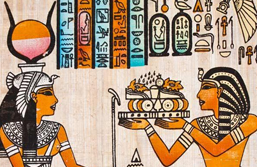


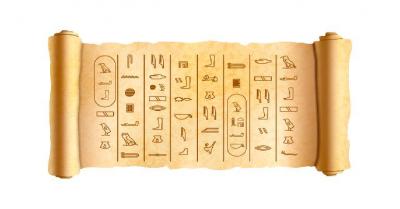



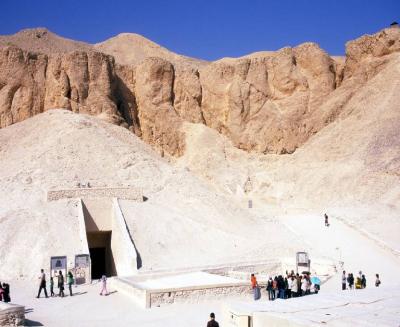


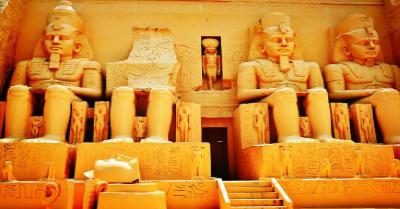
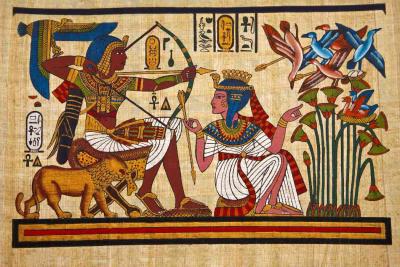






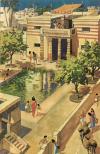

Comments